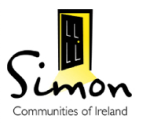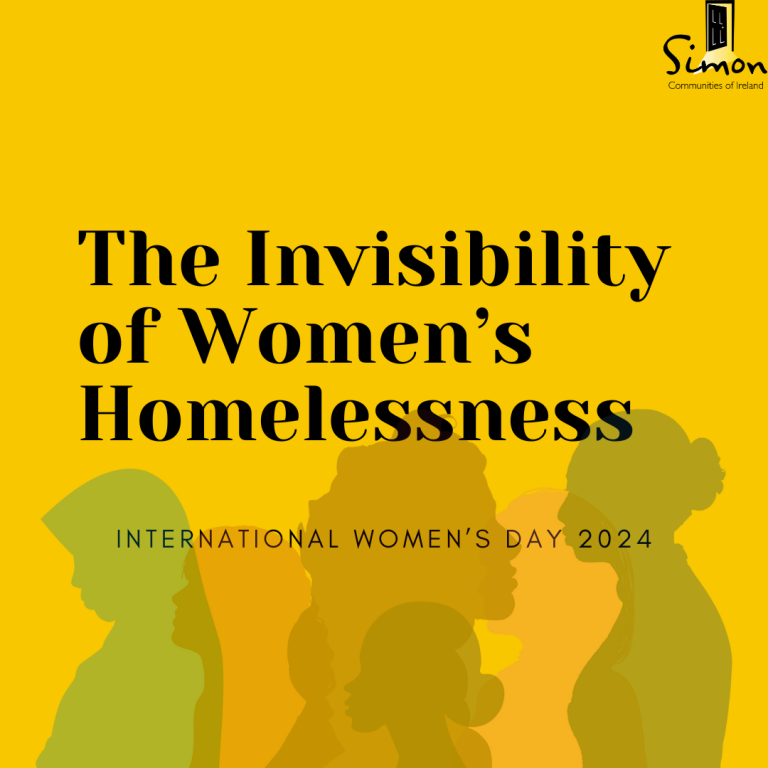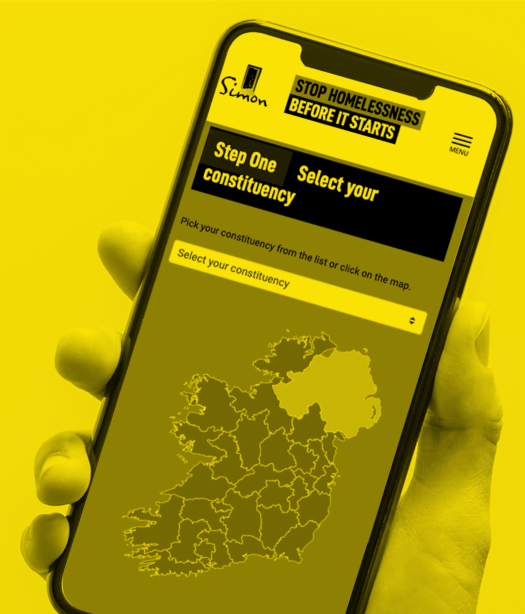An affordability crisis will continue to drive people into homelessness, the Simon Communities of Ireland has warned. According to their quarterly Locked Out report, the Covid-19 pandemic and related restrictions have brought about some change in the Irish private rental market in 2020, however an underlying chronic lack of affordable supply persists.
The Locked Out report found just four properties were available within standard HAP limits for a single person and a further 95 properties were found within discretionary limits for single people. Six of the 16 study areas did not have a single property available within either standard of discretionary HAP limits in any of the four family categories. 95% of properties available within HAP limits were in Dublin.
There were 3019 properties available to rent at any price within the 16 areas over the period 14th to 16th December 2020, a significant 19% increase from the 2,543 properties which were available to rent at any price in September 2020. However, it is a similar number to the 2,988 properties recorded in June 2020, representing just a 1% increase in supply since June.
Wayne Stanley, Head of Policy and Communications at the Simon Communities of Ireland said;
“The Locked Out report looks at the experience of people who may be on a low income and in receipt of housing assistance payment (HAP) and what the possibility is for them accessing accommodation in the private rental market. We still have an affordability crisis across the housing system and this is what will drive people into homelessness. What this report shows is that the single person doesn’t fare well, but the availability of accommodation has increased in the Dublin region.
Over the last year we have seen a significant fall in the number of people in homeless emergency accommodation since 2019. Homeless numbers have gone down almost 20%. That’s due to a number of factors; the number of people coming into homelessness has fallen, the moratorium the Government brought in on people being evicted during the last year and the prevention of rent increases. However, we do know official numbers don’t show the full extent of the homeless crisis, as the measures taken mask the structural issues that lead to increases in homelessness.”
Findings in the Locked Out report show there were 1,160 properties available under a standard or discretionary limit in at least one of the four household categories, representing 38% of the total properties available. This represents a significant 57% increase on the 738 properties which were available within at least one HAP category in the September study.
“We are concerned that when the restrictions are eventually lifted, we’ll go back to where we were or worse as we haven’t seen the full effect of fallout from the Covid-19 pandemic. We need greater discretion on HAP payments for local authorities outside Dublin. Allocation of local authority housing across Ireland to get people out of homelessness combined with a programme of building that’s going to provide the needed level of social and affordable housing. We also need a better understanding of hidden homelessness and outreach services into communities to stop homelessness before it starts,” continued Stanley.
ENDS
For media queries and interview requests contact
Aileen Gaskin
P: 087 7724 717
E: communications@simoncommunity.com
Editor’s Notes:
See Executive Summary here –
See Locked Out report here –
https://www.simon.ie/Portals/1/Locked%20Out%20of%20the%20Market%20January%202021_1.pdf
Household Types:
Singles: Just 4 properties were available within standard HAP limits for a single person. A further 95 properties were found within discretionary limits for single people.
Couples: 69 properties were available to rent within the standard HAP limits for a couple. 403 properties were available in this category within discretionary limits. This represents a very small increase in available properties since the September study in this category, from 38 and 222 respectively, an increase overwhelmingly driven by Dublin.
Families: (1 child): 6 properties were available for a couple/one parent and one child within standard HAP limits. A further 562 properties were found within discretionary limits, with the vast majority (548) of these located in Dublin.
Families: (2 children): 14 properties were available within standard HAP limits for a couple/one parent and two children. A further 662 properties were found within discretionary limits, with the vast majority of these located in the three Dublin areas (626).
*16 areas include –
Athlone- There was a decrease in properties available from 22 to 21 between the September and December studies, and just one property available within a HAP limit across the four household categories.
Cork City Centre – There were 126 properties in Cork City Centre, a 75% increase in supply from the 72 properties available in the September study. There were 7 properties available within HAP rates across the four household categories, up from none in September.
Cork City Suburbs – There was an average of 72 properties to rent in Cork City Suburbs, up from 57 in September. Of those, just four properties came within a HAP rate across the four household categories.
Dublin City Centre- There was an average of 644 properties available to rent in Dublin City Centre, a 9% increase on the 587 properties available in September. There were just 11 properties available within standard HAP limits, and a total 199 properties available within standard or homeless HAP rates, an increase in 137 properties within at least one HAP category in he September.
Dublin City North- There were 526 properties available to rent in Dublin City North, representing an increase on the 450 properties in September and a significant increase on the 230 properties available in the March 2020 study. Of those, 347 properties were available in at least one household category under either standard or discretionary HAP, a 47% increase from the 236 properties in September.
Dublin City South- There were 1,232 properties available to rent in Dublin City South, a major increase still an increase on the 635 properties available in the March 2020 study, and an 18% increase in the 1041 properties available in the previous September study. 560 properties fit into at least one HAP category across the households, up 74% on the 321 properties within a HAP category in September.
Dundalk- 41 properties were available to rent in Dundalk, an increase from 27 properties in September. 27 of those properties fit into at least one HAP category. However, no properties available to rent within HAP limits for a single person, and just one property was available for couples.
Galway City Centre- 62 properties were available to rent in Galway City Centre, an 87% increase on the 33 properties recorded in the September study, and return to the level of availability recorded in the June study, where 66 properties were available. For the fifth study period in a row there were no properties available within HAP limits.
Galway City Suburbs- 61 properties were available to rent in Galway City Suburbs over the study period, a decrease on the 66 in September. Just 3 were available within either standard of discretionary HAP limits.
Kildare (Selected Areas)- 91 properties were available to rent during this study period, an increase from the 69 properties recorded in September. 7 came within HAP limits for at least one of the four household categories.
Co. Leitrim- 12 properties available to rent, a decrease of 3 properties when compared to September. Five of these properties came within a HAP rate, all within the two-child family category.
Limerick City Centre- 60 properties available to rent, a very significant increase on the 21 properties available in September, and closer to the level of supply shown in the June 2020 study of 52 properties. No properties available within either standard or discretionary HAP limits in Limerick City Centre, for the fourth study in a row.
Limerick City Suburbs- 25 properties available to rent, a decrease of 3 properties on September. There were no properties available within standard or discretionary HAP limits across the four categories.
Portlaoise- 8 properties available to rent, a modest increase on the four properties available in September. There were no properties available within HAP limits in Portlaoise during this study period, remaining over the past five studies.
Sligo Town- 12 properties available to rent, a decrease on the 17 properties available September, which in turn had been a decrease on the 33 available properties in June. There were no properties within HAP limits.
Waterford City Centre- 26 properties available to rent, a decrease from the 34 properties in September, itself down from 56 properties available in the June 2020. No properties were available within HAP limits.
About Simon Communities
The Simon Communities support over 18,000 men, women, and children. We have 50 years of experience providing homeless, housing and treatment services to people facing the trauma and stress of homelessness. We are a network of independent Communities based in Cork, Dublin, Dundalk, Galway, the Midlands, the Mid West, the North West and the South East, responding to local needs and supported by a National Office in the areas of policy, research, communications and best practice. We share common values and ethos in tackling homelessness and, informed by our grassroots services, we campaign for more effective policies and legislation regionally, nationally and at European level. Whatever the issue, Simon’s door is always open for as long as we are needed. For more information, please visit www.simon.ie.
Services include:
- Homelessness prevention, tenancy sustainment and resettlement.
- Street outreach, emergency accommodation and harm reduction.
- Housing with support and Housing First services.
- Homeless specific health and wellbeing services (counselling; addiction treatment and recovery; and mental health supports).
- Personal development, education, training, and employment services.
- Food banks, drop-in centres and soup runs.


